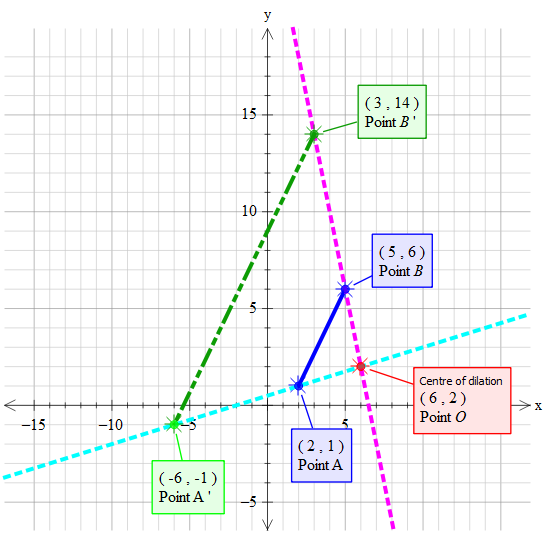A line segment has endpoints at #(5 ,6 )# and #(2 , 1)#. The line segment is dilated by a factor of #3 # around #(6 , 2)#. What are the new endpoints and length of the line segment?
1 Answer
Explanation:
Dilation is a fancy word for scale. As soon as you talk about scale your are dealing with ratios. Dilation that is positive increases the magnitude. Assuming positive dilation as not indicated otherwise.

'~~~~~~~~~~~~~~~~~~~~~~~~~~~~~~~~~~~~~~~~~~~~~~~~~~~~~~~~~
.......................................................................................
'~~~~~~~~~~~~~~~~~~~~~~~~~~~~~~~~~~~~~~~~~~~~~~~~~~
............................................................................
~~~~~~~~~~~~~~~~~~~~~~~~~~~~~~~~~~~~~~~~~~~~
'~~~~~~~~~~~~~~~~~~~~~~~~~~~~~~~~~~~~~
Length

